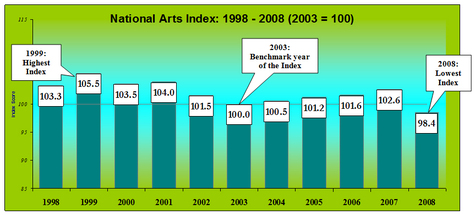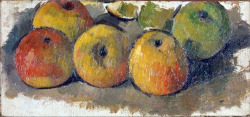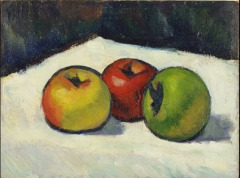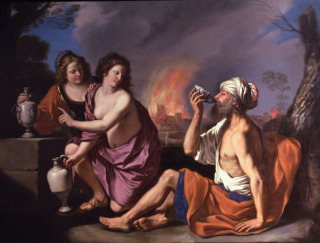Feeling a little low? Ill even? Today Americans for the Arts announced and released its new National Arts Index, and you can see, the latest number isn’t good:
 I have several times called on the arts community to produce better statistics — actual, accurate, relevant and up-to-date data (here, here, here and here, for example).
I have several times called on the arts community to produce better statistics — actual, accurate, relevant and up-to-date data (here, here, here and here, for example).
So I’m glad Americans for the Arts is trying something. It devised the National Arts Index by taking into account 76 “equal-weighted, national-level indicators of arts activity.” And the group says that makes it “one of the largest data sets about the arts industries ever assembled.” Americans for the Art intends to make this an annual measure; the first report covers the 11 years from 1998 to 2008.
Along with the index came a 21-page executive summary (here) and a 146-page full report (here). I haven’t had time to read them, but I do intend to look at, at least, the short version. What numbers, their source, and how they are used are important, obviously, and I’d like to know the answers.
Meantime, here are a few conclusions, verbatim:
[Read more…] about How Are The Arts Doing? Not So Well, A New National Arts Index Says

 When he announced his $100,000 Pinchuk Prize
When he announced his $100,000 Pinchuk Prize If
If  The museum’s previous record for an exhibition was 12,000 visitors, plus 5,400 in groups, for
The museum’s previous record for an exhibition was 12,000 visitors, plus 5,400 in groups, for  For 50 years, the
For 50 years, the